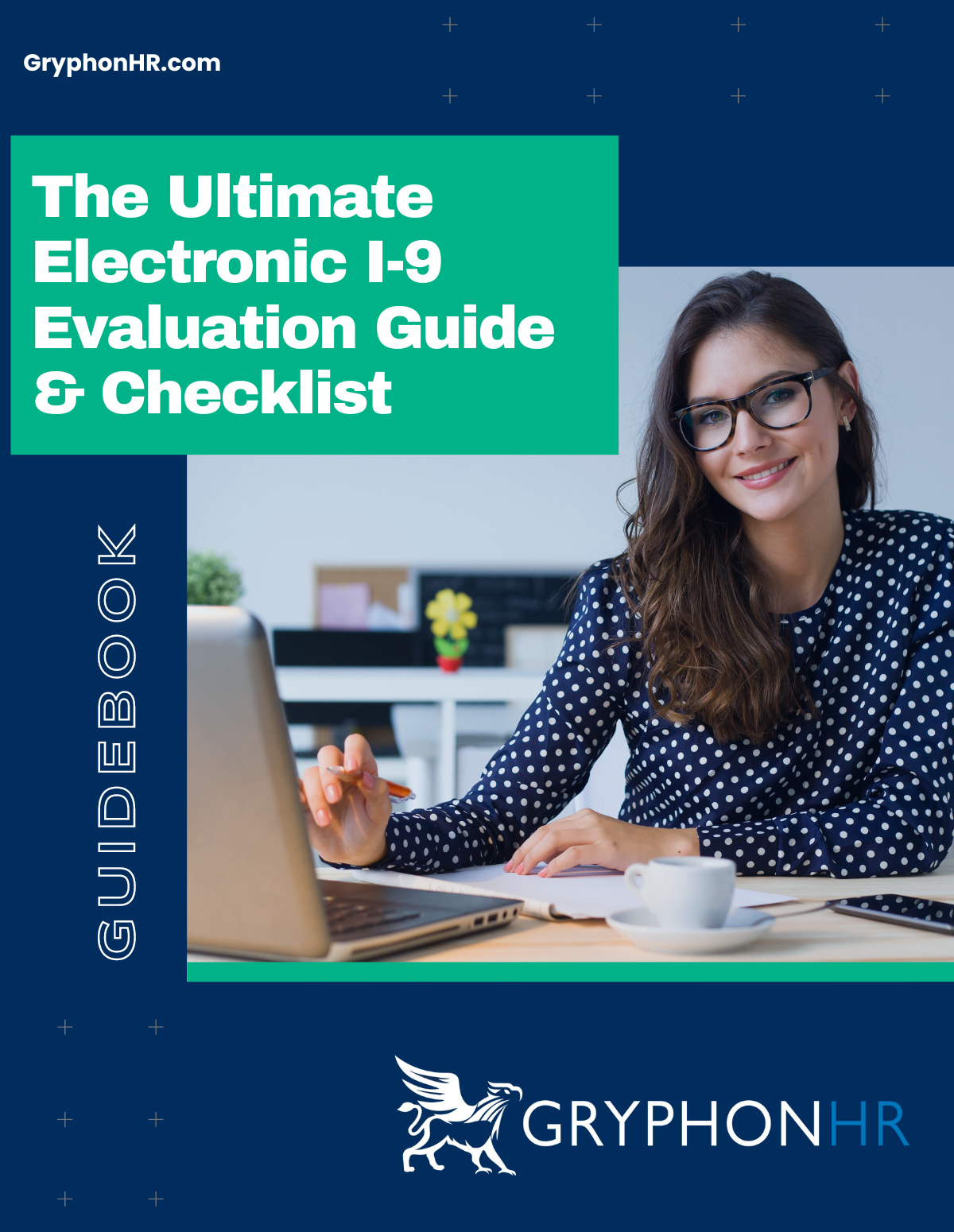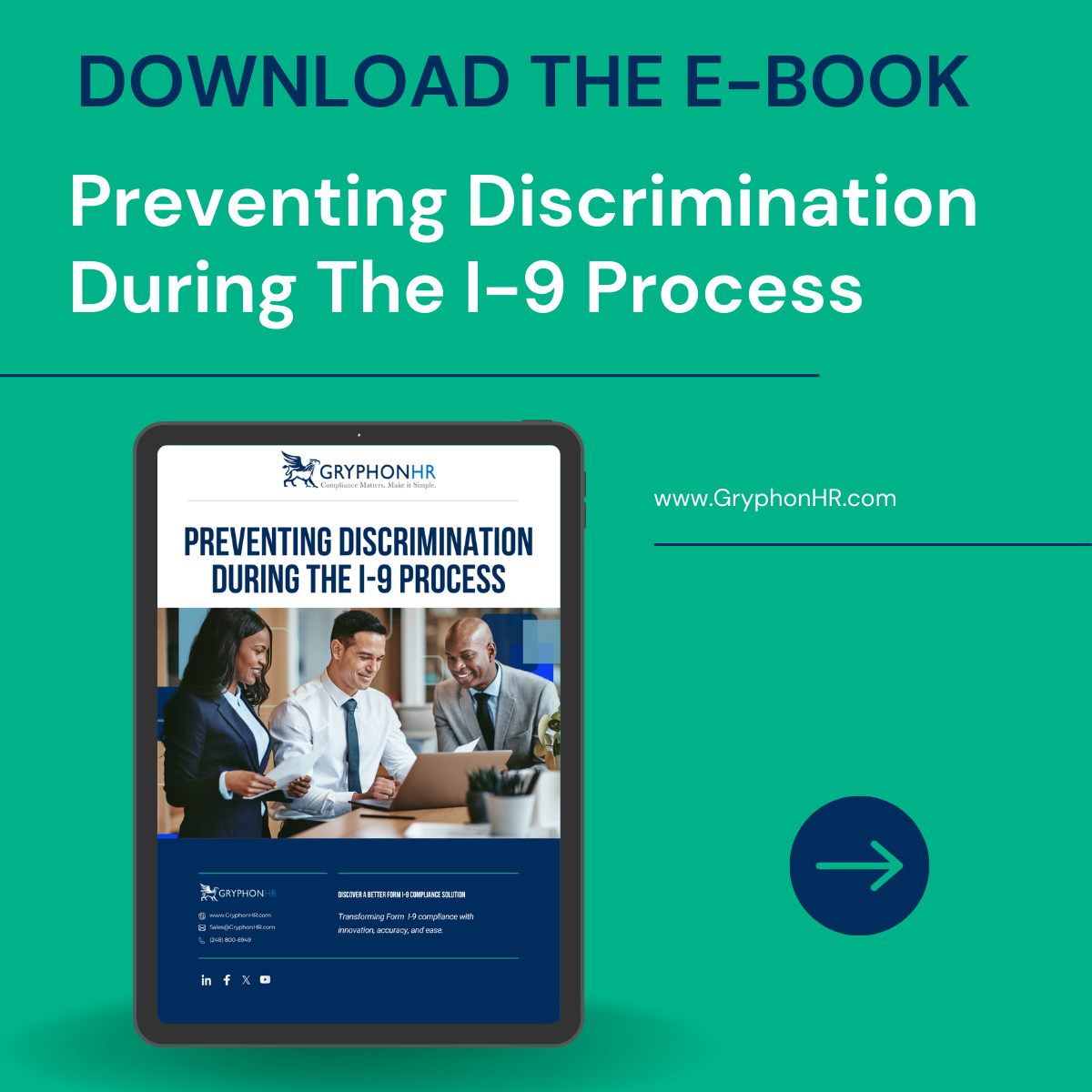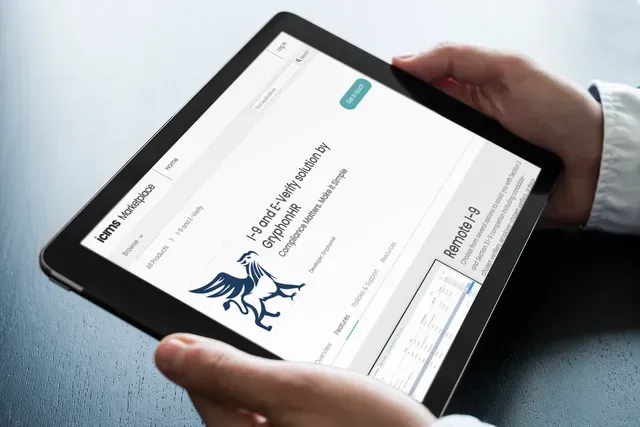Authored By: GryphonHR Blog Contributor
GryphonHR blog contributors include , consultants, researchers, and other subject-matter experts who’ve written content for our blog.
June 12, 2023
Earlier this year, The White House announced that a proposed Bill: H.R.2, also known as the "Secure the Border Act of 2023," which has now been passed by the House, would face a veto from President Biden if it were to reach his desk. This bill would require the construction of the border wall to resume, increase border personnel and technology, and impose additional asylum restrictions on migrants at U.S. borders. Section 801 of the bill also proposes mandatory E-Verify use for U.S. employers.
While the bill may face challenges in gaining substantial support in the Senate, federally mandated E-Verify has been a subject of ongoing debate for a considerable period of time.
E-Verify is currently mandated in 22 states, with Florida as the newest state to pass legislation for mandatory use of E-Verify for employers with 25 or more employees, beginning July 1, 2023.
Although some states require E-Verify for most employers, while others require it for public employers within a county or city ordinance, E-Verify is mandatory in every state for Federal Contractors and their subcontractors with contracts that include the FAR (Federal Acquisition Regulation) clause.
It is crucial for businesses operating across multiple states to ensure they are well-informed about the specific locations where they are obligated to employ the E-Verify system. To determine whether your business needs to utilize E-Verify you can ascertain the applicable requirements by staying informed of the laws of your local, county, or state government.
Since 1986, all employers in the United States have been obligated to authenticate the identity and employment authorization of their new workers. The federal government has established two separate systems, namely Form I-9 and E-Verify, for the purpose of verifying the eligibility of recently hired employees. Although both systems serve the common goal of confirming an individual's work authorization, they differ in their procedures and requirements.
Form I-9 holds great significance for employers as it enables them to ensure that their employees are legally permitted to work in the United States. The process involves completing and retaining the I-9 for each new hire. The Form I-9 mandates all U.S. employees to present original and unexpired documents that establish their identity and employment authorization. Employers must examine these documents to ascertain their authenticity and record the relevant information on the Form I-9.
Conversely, E-Verify is a free web-based system for verifying employment eligibility, managed by the U.S. Citizenship and Immigration Services (USCIS). It allows employers to verify the employment eligibility of newly hired employees by comparing the information provided by an employer from an employee's Form I-9 with the records accessible to the U.S. Department of Homeland Security and the Social Security Administration. This comparison helps confirm the employee's eligibility for employment.
House GOP leaders agreed to make changes to the border security bill following concerns from congress members over the potential negative impact mandatory E-Verify may have on agriculture and farming industries.
Farming and agriculture groups have issued warnings about the potential consequences of enforcing E-Verify without simultaneously enacting legislation that offers a pathway to legal status for undocumented farmworkers or revising the agricultural visa system. They argue that such a scenario would result in significant labor shortages within the agricultural industry. The Department of Agriculture has reported that over 40 percent of crop farm workers employed are without legal immigration status.
Some of the changes to the bill include a phased approach to E-Verify, providing certain time frames for compliance with new laws to employers based on their size and/or industry.
In summary, Section 801 of the bill, phases in the required usage of E-Verify with the first group of employers required to use E-Verify, nonagricultural employers with 10,000 or more U.S. employees, must do so beginning six months after this title's enactment. Employers with fewer employees are subject to later deadlines. Agricultural employers must start using the system beginning three years after this title's enactment. DHS must grant a one-time extension to this deadline upon request to employers with 50 or fewer employees.
This bill may not pass in the Senate or may be eventually vetoed, however, the topic of securing the nation's borders and deterring an illegal workforce is expected to continue to be on the forefront of legislative agendas on both state and federal levels. It’s important that employers stay well informed of any changes. Sign-up for the GryphonHR newsletter and we’ll be sure to keep you apprised on Form I-9 and E-Verify updates.
Though it is uncertain that more U.S. states will adopt laws to mandate E-Verify or if it will one day become mandated on a federal level. Either way employers still need to be sure to complete a Form I-9 for every employee on their payroll, that is something that is mandated on a federal scale, with fines and penalties for non-compliance that show a trend of increasing year over year.
An
electronic Form I-9 compliance solution can help you to meet the federal laws regarding employment eligibility and can help you to meet compliance with E-Verify requirements. GryphonHR provides a seamless E-Verify integration to instantly submit the Form I-9 to E-Verify and enables quick responses and efficient E-Verify case management.
Get in touch with us to see how it works or to learn more about how we can help your business with employment eligibility and verification.

Authored By: GryphonHR Blog Contributor
GryphonHR blog contributors include , consultants, researchers, and other subject-matter experts who’ve written content for our blog.
Stay updated on Form I-9 and E-Verify!


Is your I-9 compliance software placing you at risk? Learn more about the compliance requirements for electronic I-9 systems and how to evaluate important features. Skip the form and download this interactive guide!

Avoiding discrimination during the Form I-9 process is critical to preventing liability, hefty fines, and unfair hiring practices. Download our free e-book to learn more.



MENU
STAY CONNECTED
Join our newsletter to learn more about Form I-9.